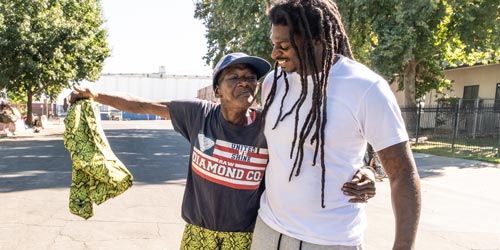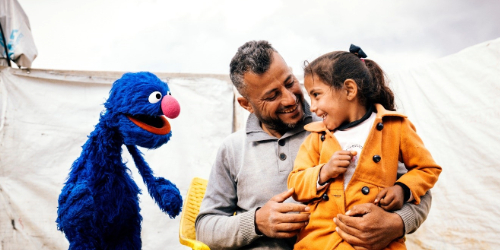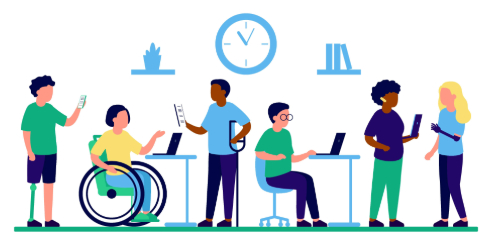Rockefeller Philanthropy Advisors and Columbia Business School partnered to create an educational opportunity for students to assess the 100&Change Top 100 and select one proposal for a $100,000 award.
In philanthropy, more often than not, those seeking funding are engaged in a competition—even when the process is not explicitly categorized that way. A well-designed and well-run philanthropic competition creates value for all parties, from the clear benefit of additional funding for the “winners” to the learning opportunity presented to those who do not win to better hone their story, articulate their impact, and possibly even improve their programs for the next go-round. What rarely gets discussed is the benefit of the competition for the proposal reviewers—the evaluators, the decision makers—who should also be affected by and grow from this process.
This spring, we had the opportunity to test this proposition and view growth first-hand. Rockefeller Philanthropy Advisors partnered with MacArthur-affiliate Lever for Change and Columbia Business School’s Tamer Center for Social Enterprise to bring a funding competition to MBA students. The students, enrolled in a course on Global Philanthropy for which Melissa Berman was the professor, were called upon to review some of the Top 100 contenders from MacArthur’s 100&Change competition, ultimately selecting one proposed initiative to receive a $100,000 award.
The Project and Process
The students were separated into 12 teams, and each team chose an area of focus among the world’s greatest challenges, as defined by the United Nations. Within its focus areas, each team selected three projects, researched the issue area, defined the challenge, and reviewed potential solutions offered by the project proposals. The students evaluated their projects based on two sets of criteria. Berman developed one set for the Global Philanthropy course, which included:
- the project’s capacity for driving systems change (as distinct from scalability);
- the level of authentic engagement with the communities served; and
- the use of bottom-up approaches.
The other criteria were set forth by MacArthur to select a top contender, which had the students consider the degree to which the projects were impactful, evidence-based, feasible, and durable.
In conducting these evaluations, the students relied solely on the materials provided by the projects as part of their entry into the 100&Change competition. Given the quality, scope, and range of the projects, this was not an easy choice, and the students were called upon to examine their values and assumptions. Students also found themselves reviewing the proposals with a new lens—their desire that projects be relevant in a post-pandemic world. While the applications were submitted before the pandemic, what they realized is that most projects would be responsive to both the current situation and long-term systems change.
Students were further asked to assess ‘hard’ and ‘soft’ systems-change factors—a great model for philanthropy generally and for the students to explore as they advance in their careers. Each team developed a presentation, based on their own analysis of the key criteria, to convince their peers that the project they selected was most worthy of the $100,000 award.
The $100,000 Project Award
The first round of voting was inconclusive, with four projects within one vote of one another. (The students were naturally prohibited from voting for their own team’s project). The second round of voting, a four-way run-off among the highest-scoring projects, resulted in a clear winner: the Mercy Corps AgriFin initiative on Transforming Small-Scale Farming in the Face of Climate Change.The project strives to create a seamless network of 25 million small-scale farms and help them adapt to a changing climate by using mobile-phone-accessible satellite technology in partnership with NASA and online, locally translated and contextualized education in collaboration with Digital Green.
Mercy Corps AgriFin received the $100,000 award because it effectively tackled inequity, poverty, and the impact of climate change through an innovative approach that directly involved those in the community.

Photo credit: Ezra Millstein
Key Takeaways
Judging by their thorough, analytical presentations, the students—as decision makers—clearly benefited from this exercise. The in-depth process helped them to understand not only considerations that go into strategic grantmaking but also to develop a sense of the rigor, complexity, and values-based leadership needed to create thoughtful and effective social change.
And, as an added benefit, this process is an example of how a submission for one program can serve to fulfill criteria for other donors, thereby lessening the burden on high-impact organizations that might not apply for funding due to time, staff, or other resource constraints. This builds on the mission of the Bold Solutions Network, which houses all of the Top 100 proposals from 100&Change in an online searchable database.
Though the course only took place over a period of six weeks, these future business and social sector leaders learned some of the critical skills necessary for tackling the complex systems and immense challenges facing society and the planet today. It is a wonderful precursor to the $100 million award recipient that will be announced in the spring of 2021. Moreover, we are thrilled with the collaboration between our organizations and how it stimulated thinking, enhanced conversations on systems change, and resulted in funding to the well-deserving Mercy Corps for its AgriFin project.















